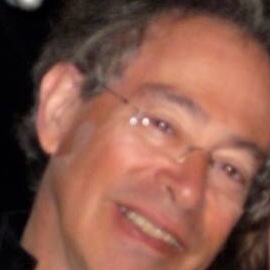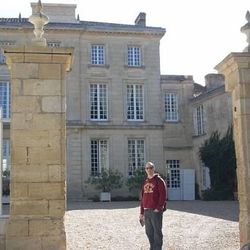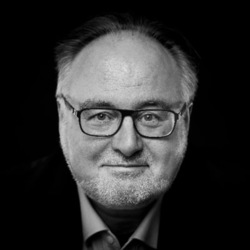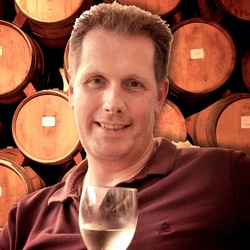Pierre Charau (union Des Grand Crus)
Pierre André
Clos De La Commaraine Pommard 1er Cru Pinot Noir
2009. Excellent but overshadowed by the Grand Crus that surrounded it. — 11 years ago
Levensohn Vineyards
Cabernet Sauvignon 2012
Levensohn 2012 Napa Valley/St. Helena Cabernet Sauvignon
I had the good fortune to taste this exciting wine on two occasions, first at a party for the Union des Grands Crus de Bordeaux organized by Jeff Leve (The Wine Cellar Insider) in Bel Air, together with a number of top Bordeaux producers! And then at a dinner at Silvio Denz's Château Faugères, a grand cru classé in Saint-Emilion. I've always enjoyed sharing some of Napa Valley's finest with some of Bordeaux's top producers! I think it fair to say that everyone, myself included, was very impressed with this rendition of Pascal Levensohn's latest release, produced from grapes grown in his own Saint Helena vineyard, most of which fruit he sells to Vineyard 29.
The color is like the band: saturated Deep Purple, leaving little doubt as to the ripeness of the harvest. The nose gains in both intensity and complexity as the wine comes to life in the glass revealing aromas of ripe blue and black fruits, subtly underscored by hints of vanillin and espresso, these latter scents being the result of nearly two years aging in high-quality, new French oak barrels. Nothing is overstated here, au contraire: complexity is as much in play here as is concentration. On the palate, the wine has a velvety caress thanks to its superbly integrated grape and oak tannins that confirm the impression of ripeness but also the deft hand of the winemaker. Similar blue and black berry fruits that were evident on the nose also infuse the flavors of this intriguing wine. The wine's finish is lengthy and altogether seamless. Nothing stands out but for the overall harmony and balance of this beautifully knit rendition of Napa Valley Cabernet.
I thought the 2010 Levensohn was a very fine wine when I tasted it last year. But this 2012 rises to a whole new level, one where it begins to flirt with some of the Valley's most prestigious names. My friends from Bordeaux, with whom I was pleased to share it, were as impressed as was I. Alas, the wine has but one fault: there were only 49 cases produced – and one of them is already spoken for!
— 11 years ago
Château Haut-Bailly
Pessac-Léognan Grand Cru Classé Red Bordeaux Blend 2016
Drank 1/18/19 at the Union des Grands Crus de Bordeaux event in Miami. All wines from the 2016 Vintage.
Tasting pour, no formal notes taken. Most of these wines are very tight, and will require 5-15 years to really come together. Many will likely improve a few points with time. — 7 years ago

Pierre Péters
Blanc de Blancs Brut Grand Cru Champagne Chardonnay 1996
Found my 98 pointer here; speaks volumes for grand crus in #mesnil #grandcru #pierrepéters #chardonnay #1996 @grandmasterfizz — 10 years ago
Château de Fieuzal
Grand Vin De Graves Pessac-Léognan Red Bordeaux Blend 2011
Had at union des grand crus. One of the most ready to drink wines at event. Very good! — 12 years ago
Château Branaire (Duluc-Ducru)
St. Julien Red Bordeaux Blend 2006
On the nose, bright, ripe, ruby; blackberries, dark cherries, black raspberries, blue fruit mix, strawberries, creamy raspberries, plums, cranberries, black tea, loamy soils, dry clay, dry stones, limestone minerals, saddlewood, crush dry rocks, dark moist soils, dark chocolate, vanilla, field of violets, lavender and fresh red florals.
The palate is medium-full yet a little lean. The fruits are elegant, ruby, ripe; blackberries, dark cherries, black raspberries, blue fruit mix, strawberries, creamy raspberries, plums, cranberries, black tea, loamy soils, dry clay, dry stones, limestone minerals, used leather, cedar, crush dry rocks, dark moist soils, dark chocolate, vanilla, field of violets, lavender and fresh red florals. The acidity is very good. The length, balance and length are nice. The structure a little lean. It a well polished rich fruit finish, but is a little short.
Photos of; the Chateau, Owner Patrick Maroteaux (may he RIP), Estate grapes and their barrel room.
Producer notes & history...Branaire Ducru has a long history has a long history that dates back to 1680. In those days, Branaire Ducru was a part of a larger Beychevelle. When the owner of Beychevelle passed away, he left behind a huge Bordeaux vineyard that was seriously in debt. To pay off the debt, the vineyard was broken up and sold. Several new estates were created in Saint Julien, which include Chateau Branaire Ducru. Jean-Baptiste Braneyre created the estate in 1680. As was was tradition in Bordeaux, the owner gave the estate his name, which is where the first part of the properties name came was given. Braneyre was later altered to Branaire. Braneyre bought the land we know as Branaire Ducru because of the terroir. He understood that Cabernet Sauvignon grew best on the deep gravel soils found in the Medoc. With that, we have the birth of Branaire Ducru. Or, at least the Branaire part. The middle name was gained through marriage. Marie Braneyre married Pierre de Luc which as you can guess, gave us the Branaire Duluc (the name of their 2nd wine). Almost 100 years later, the first winery at the property was constructed in 1824. It took almost 200 years for the Ducru portion of the wines name to make its way to the label. In 1875, with no direct descendants, Gustave Ducru, a more distant relative took over the property and added his name to the label making it, Chateau Branaire Ducru.
Patrick Maroteaux bought Branaire Ducru in 1988 from the Tapie family who had owned It since 1919. Prior to his ownership of Branaire Ducru, Patrick Maroteaux had no prior experience in the wine business. His background was in banking and then a president of the massive sugar company, Eurosucre. Patrick Maroteaux also served as the President of the UGCB, Union of Grand Crus Bordeaux, and as the President of the Saint Julien appellation.
Since his purchase, Patrick Maroteaux has focused much of his efforts on performing extensive work in the vineyards and in the cellars. He also began reducing the yields. Additionally, he increased the size of their vineyards by 10 hectares. Patrick was also modernized their winemaking techniques.
In fact, Patrick Maroteaux was one of the first producers in the Left Bank to being filling his tanks entirely by gravity. He did this beginning with the 91 vintage. This was done with the help of Philippe Dhalluin.
Philippe Dhalluin left Branaire Ducru in 2004 and took the same position as the director for wine making at Chateau Mouton Rothschild. Philippe Dhalluin was replaced by Jean Dominique Videau.
Chateau Branaire Ducru is a family business. The son of Patrick Maroteaux, François Xavier Maroteaux has carried the family business and joined the estate. Sadly, on November 19, 2017, Patrick Maroteaux passed away at the age of 67. His son, François Xavier Maroteaux took over the full time responsibilities of managing the property.
All the new technical improvements at Branaire Ducru quickly paid off for Patrick Maroteaux. Beginning with the 2000 vintage, Branaire Ducru became one of the top Saint Julien wines. It’s also one of the better values for high quality Bordeaux.
The 60 hectare vineyard of Branaire Ducru is planted to 65% Cabernet-Sauvignon, 28% Merlot, 4% Cabernet Franc and 3% Petit Verdot. The vineyard is very close to the size it was during the time of the 1855 Classification.
The terroir is deep gravel with clay soils. The best terroir is located near the chateau, closest to the Gironde river. They also have blocks further inland, with a small section of vines placed close to Chateau Lagrange and Chateau Talbot. The vineyard can be divided into 15 different blocks with 70 different parcels of vines. On average, the vines are close to 35 years of age. However, the estate has older vines as well. The oldest vines date back close to 90 years of age. The vineyard is planted to a vine density that ranges from 6,700 to 10,000 vines per hectare. The higher levels of vine density are for the newer plantings. The goal of the property is to continue increasing the vine density in all of their better terroirs.
Branaire Ducru, fermentation takes place in 28 temperature controlled, stainless steel tanks. The 28 vats vary in size. The vats range in size from as small as 30 hectoliters and up to 210 hectoliters. Each vat is sized for the needs of each specific vineyard parcel. Each vat is filled using the gravity based system.
Branaire Ducru is aged in 60 to 65% new, French oak barrels for between 16-20 months. The amount of new oak varies depending on the quality, character and style of each vintage. On average, the annual production is about 25,000 cases depending on the vintage. — 8 years ago







Ken Z
Drank 1/18/19 at the Union des Grands Crus de Bordeaux event in Miami. All wines from the 2016 Vintage.
Tasting pour, no formal notes taken. Most of these wines are very tight, and will require 5-15 years to really come together. Many will likely improve a few points with time.
A very nice wine from this estate. Dominated by purple and black fruits, this one will likely drink well early and for many more years. — 7 years ago